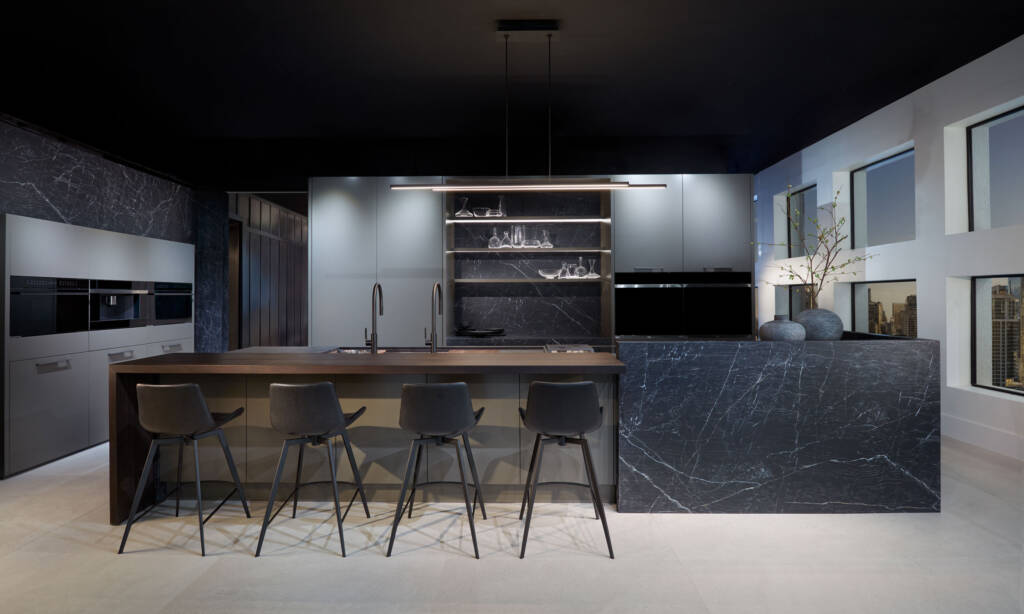
By Eve Thomas
Photography by Daniel Newcomb
To understand the present—and predict the future—you need to have a full view of the past. Toronto-founded Downsview Kitchens has been in business since 1967, so when you step into one of the company’s showrooms, such as the location in Juno Beach, Florida, you’re not just seeing what’s on display; you’re getting a glimpse of what kitchens are, have been and will be.
“I would say this project has a very European, modern feel,” says Design Consultant Sean Daigle of the More is “Noir” display in Downsview’s Juno showroom. It features Dekton Somnia countertops flush with rust-toned veins, porcelain tile flooring and cabinetry in a matte lacquer Truffle finish—already a sign of things to come in the world of kitchens and interior design. “The ubiquitous cold greys are becoming warmer,” Daigle says. “We are seeing more taupes, browns, creamier whites.”
Thirty-six years in the industry and 30 years with Downsview Kitchens have given Daigle some insight into both the company and the larger industry. Downsview is named after the Toronto suburb where founder Mike D’Uva—then a young cabinetmaker from Italy—first opened a workshop. Now, 58 years later, more than 200 employees (led by two generations of the D’Uva family) create state-of-the-art kitchens across North America.
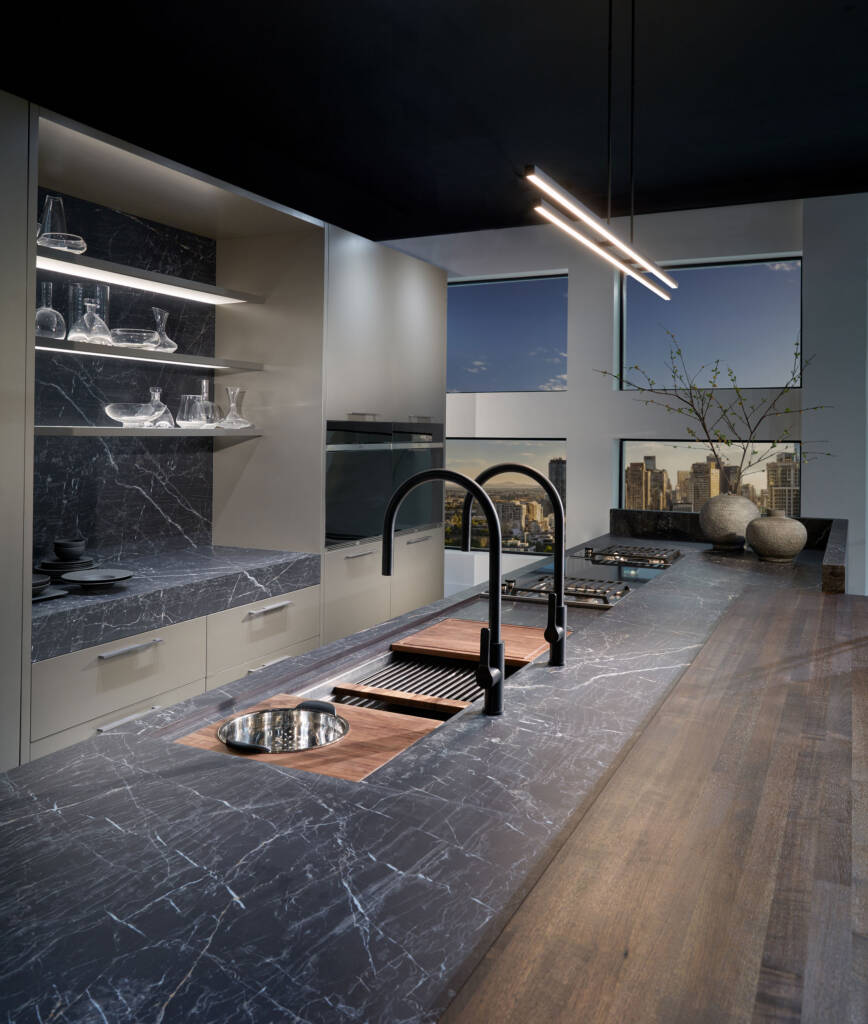
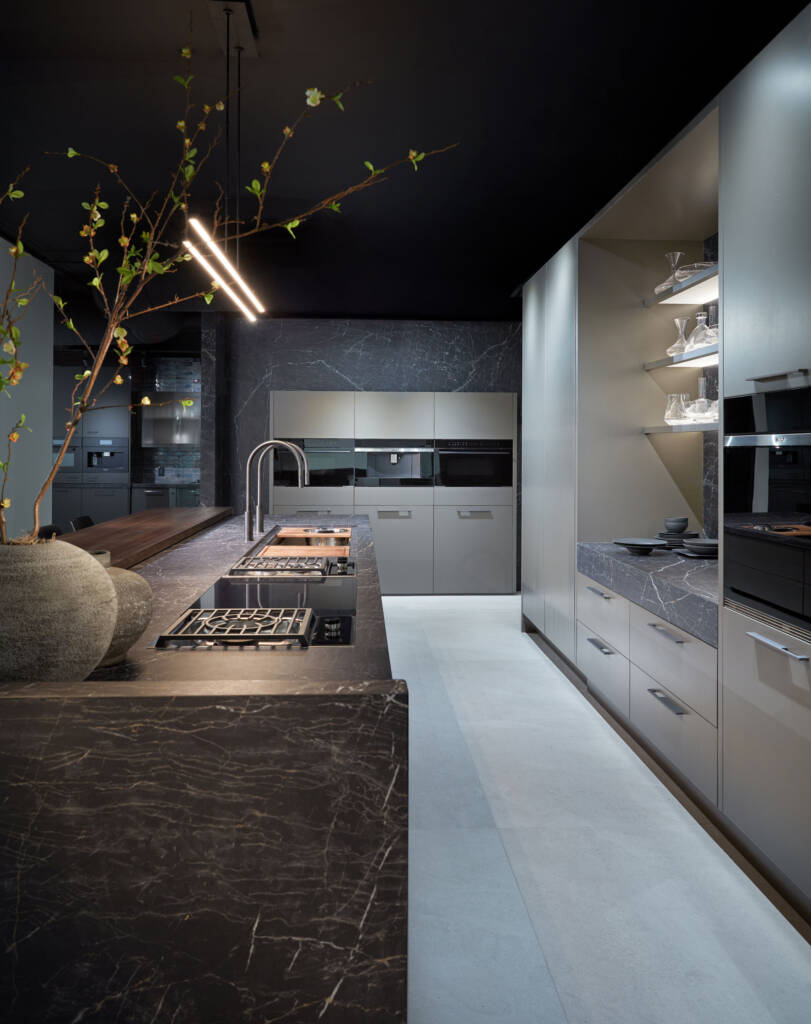
Daigle is also well-versed in the unique needs of Downsview’s Florida clients. Most of his projects are new builds or tear-down-style renovations, where they supply cabinetry for the entire homes, from the main kitchen to closets and bathrooms. Exploring 100-year-old Palm Beach houses has shown his team how much the American kitchen has changed in a century.
“We often have access to the original floor plans, and you really see what a kitchen used to be. It was front of the house, no windows, and most often built for the help.” Early on in his career, kitchens were still a bit of an afterthought: “We’d just fill in all the space with cabinetry.” And now? “Now the kitchen is the hub of the home, everyone ends up there,” Daigle says. “Clients want to be involved. Many of our projects are on the ocean or waterways, and kitchens often have the best views in the whole house.”
Another thing that has changed over the decades: “Trends used to be regional—we’d have to go to design centres to see tiles, fabric, and furniture in L.A., Atlanta, and New York,” notes Daigle. “And now clients can go to Pinterest or Houzz for inspiration.” Daigle relates it to the way Italian cuisine used to be hyper-regional, with each region boasting its specialty dish, whereas now you can order risotto across the country.
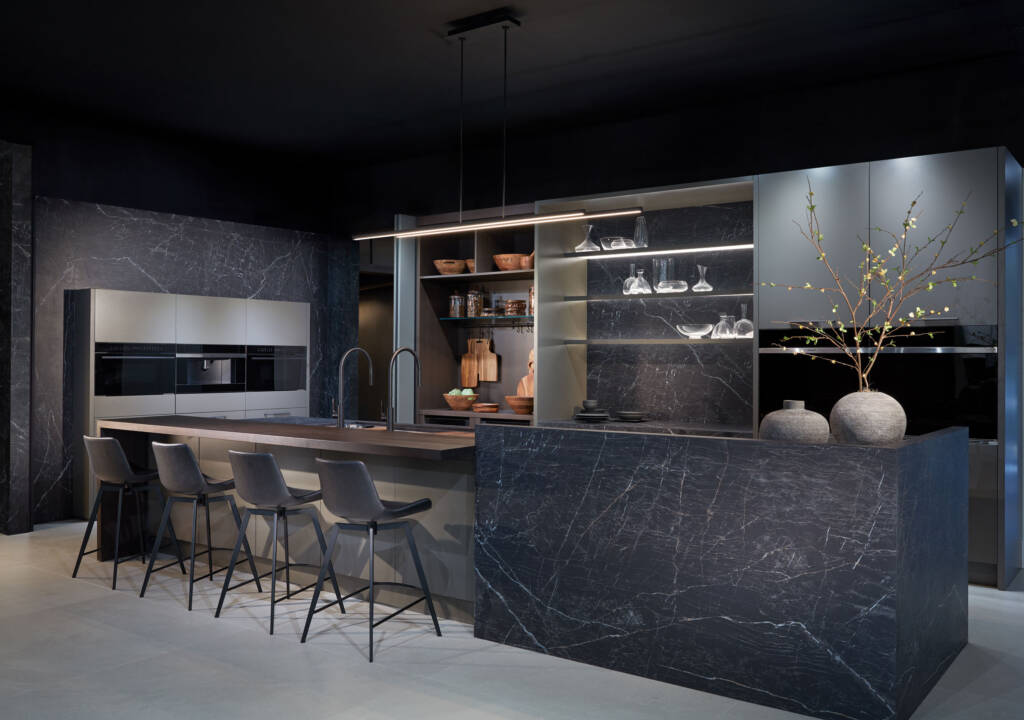
Daigle estimates half of the company’s clients are renovating or building a second home (and many have already worked with Downsview on another property), so they are open to non-traditional designs they might not choose for their main residences. They also have an eye for entertaining and hosting family and friends at their Florida properties while they are in town. That means plenty of More is “Noir”-style modern designs—with its porcelain floors and blended-mineral counters—as well as outdoor kitchens or ones that give way onto the lanai, creating a breezy, seamless indoor-outdoor experience.
Second-home status can also mean designing an entire kitchen around a single holiday or two like one Daigle recalls creating for a homeowner who wanted to host a big Thanksgiving bash (with the requisite three ovens). Downsview also designs catering kitchens or spaces for personal chefs, sometimes splitting one space into two—with a “family” kitchen in front with integrated appliances and features like induction cooktops, while the back kitchen is built for more extensive food prep.
The Juno showroom reveals yet another change Daigle has noticed over his decades in business: the evolution of man-made materials. So much so that now, they are often as alluring as the natural ones—although some clients still need convincing, especially older homeowners. And with good reason. “Thirty years ago, laminates and porcelain materials were very inauthentic. You could see the repeating patterns and how artificial materials were,” he says. “But many of the newer products are amazing, with durable laminates looking and feeling like real wood. It’s the same with porcelain and quartz. I used to be a real stone guy, but I’m changing my tune.”
In the end, when it comes to kitchen trends, good style is cyclical—in interiors as in fashion. Daigle says that the trendiest things he sees most at trade shows are the ones he knows won’t last.
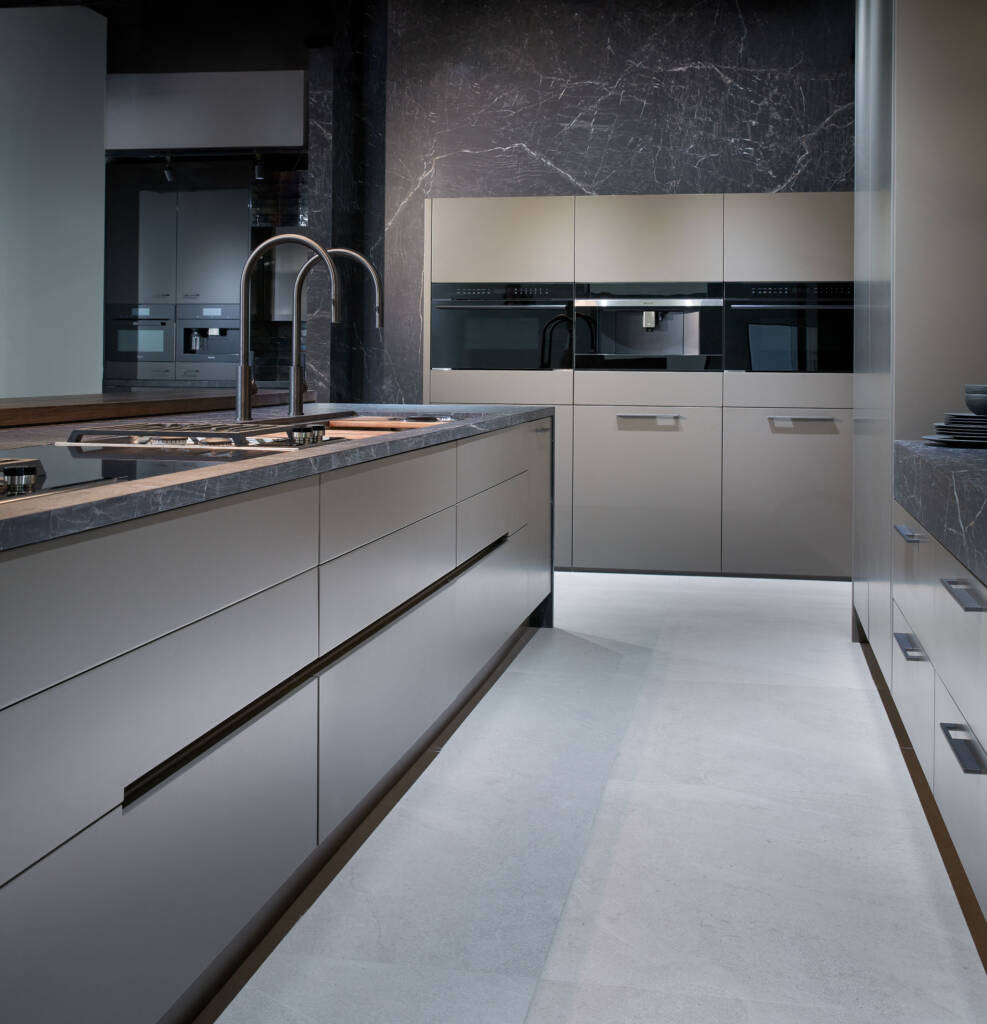
As an example, he recalls a brief heyday of glass-front cabinetry—before designers realized it often didn’t survive the journey from Europe to New York. As opposed to, say, the marble found now and forever across Italy. Or the ebb and flow of gloss and matte finishes over the years. “Traditional design will come back,” he says. “It will just come back a little differently.”